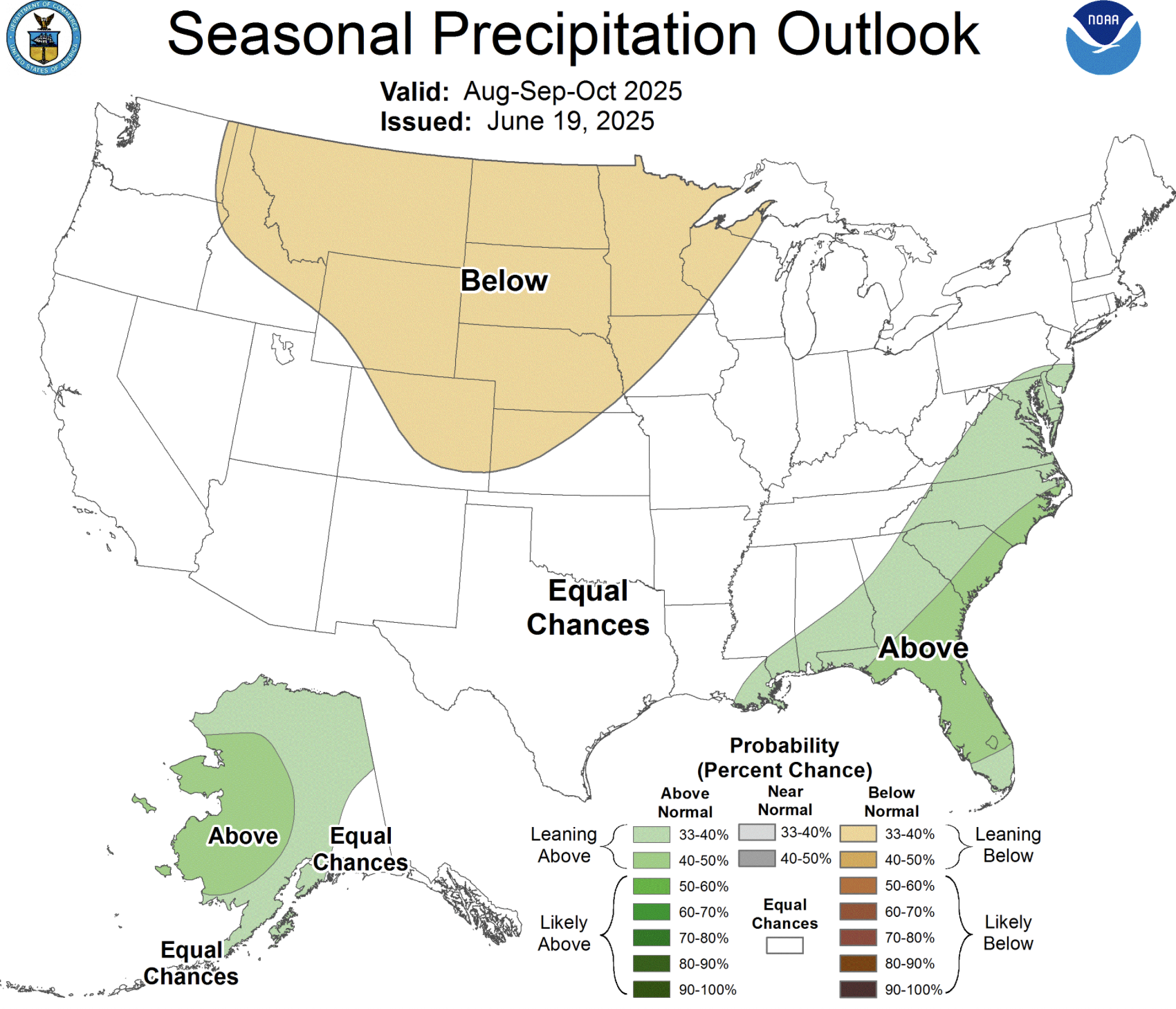Country Selector
Please enter a valid location
Weather Outlook for 2025 Harvest

As the dog days of August give way to September, the tale of Corn Belt yields will be told. The early summer setup made for happy crops and plentiful soil moisture. Regular rainfall rolled across most of the Midwest through July.
The drier, drought-expanding forecasts by most weather models for summer never materialized. Instead, the U.S. Seasonal Drought Outlook map shows no drought across the vast majority of the Corn Belt. The only areas where it persists are the long-term drought-affected areas in Nebraska, northern Kansas, southern South Dakota, and western North Dakota.
“It’s hard to find a really bad dry spot in the Corn Belt now, with the exception being northeast Illinois and northern Indiana,” said John Baranick, DTN Meteorologist.” And these few spots may see drought relief before August.”
On the other hand, temperatures have been sizzling at times this summer. While extreme heat spells have occurred briefly so far, adequate soil moisture has mitigated the yield impact because it occurred before pollination and grain fill.
Drier Days Ahead
Baranick said the weather models have largely failed to predict accurately beyond two weeks. Such prediction difficulty is common with these models given the absence of strong atmospheric forcing by El Nino or La Nina, the warm and cool phases of the El Nino-Southern Oscillation (ENSO).
“We’ve been in the ENSO-neutral conditions since early May, making global weather predictions more difficult,” he explained in late July. “But now that we’re seeing the kind of upper-level high pressure ridge setting up, where it’s been predicted to occur all summer long, we’re paying more attention to its potential expansion and persistence.”
The concern for August is that hot and dry conditions may arrive while corn and soybeans are pollinating and making grain.
“With the unusual amount of soil moisture that exists in the Corn Belt as of late July, it will hold off some stress, but for how long?” Baranick said.
The southern half of the Corn Belt and the Delta region should be in good shape as weather cooperated has for grain fill. The later-planted crops in the heart of the Midwest may not fare as well into August and the harvest season.
The southwestern edge of the Corn Belt, particularly Kansas, faces a bigger threat of becoming hot and dry in August. If the high-pressure ridge builds northward into the Plains, that could cut off much of the western Corn Belt from the storm track, according to Baranick.
“For now, crop conditions in late July look fantastic in the western Corn Belt as the good to excellent ratings are well above normal,” Baranick said. “The eastern Midwest is lagging behind a little bit; however, these conditions may flip as we go through August into September when higher precipitation and more variable temperatures shift east.”

Warmer and Drier Harvest
Most of the weather models are converging on an outlook for a weak La Nina (ocean cooling) to peak in October and November, with temperatures rising through the winter season.
“We’re already seeing cooling in parts of the Pacific, but it will be gradual and could take months,” Baranick said. “This usually means hotter and drier conditions for fall, which is our current DTN forecast. There remains some uncertainty as models don’t all agree, but we’re forecasting a nice dry and warm harvest season.”
According to historical weather models, every time a super El Nino occurs - the last one being in 2023 -it is followed by two consecutive winters of La Nina.
“Last year’s La Nina made perfect sense, even though it was late and short,” he said. “So, we expect the same thing this year.”
Baranick said this La Nina will probably be weak and short-lived, and timing will be critical. It didn’t start last winter until late December into January.
“Granted, we haven’t been able to trust the models beyond a few weeks during this ENSO-neutral period. But the entrance of cooler ocean temperatures now gives us greater confidence than last year that harvest will be warmer and drier,” Baranick said.
Content provided by DTN/The Progressive Farmer
The More You Grow
Find expert insights on agronomics, crop protection, farm operations and more.
